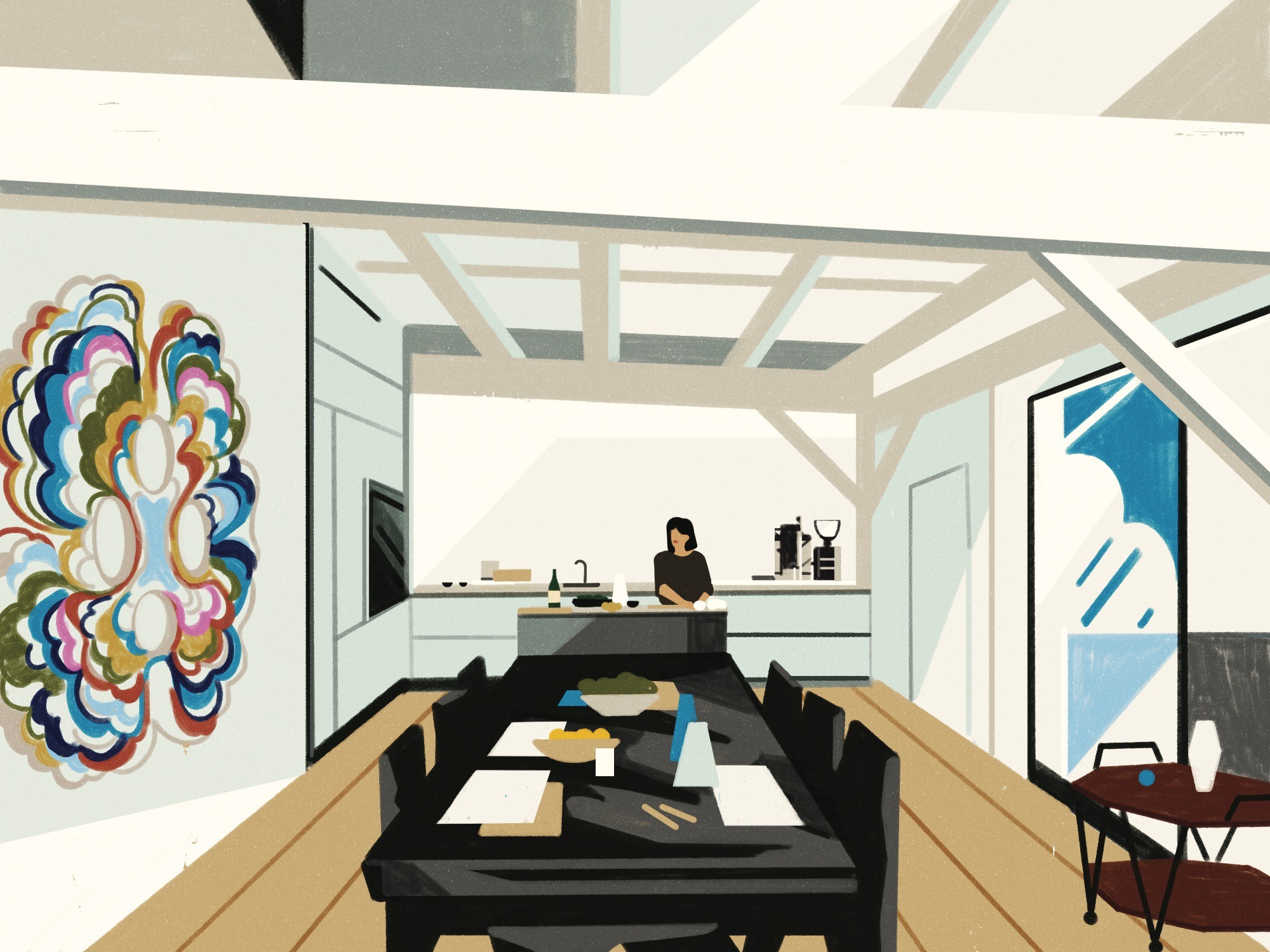Kitchen Creative is a series produced by Surface in partnership with Gaggenau that spotlights artists, architects, and designers with a passion for cooking who treat the kitchen as a sanctuary for inspiration, meditative white space, and human connection. Told in the form of as-told-to essays, the personal stories align with Gaggenau’s dedication to its foundational professional kitchen principle, which is predicated on developing intuitive technology to equip home chefs with the tools to produce restaurant-grade results. In the first installment, interior designer Rita Chraibi waxes poetic on her multicultural approach to food. In this feature, architect Stephanie Goto reveals how cooking is like choreographing a film.
When I design a building, whether it be a restaurant, a home, or a gallery, I think about proportion, scale, color, and light. The same goes for the culinary arts. The shift is almost seamless, and I’m excited I’ve reached a point where the two inspire each other—they are parallel and synergistic.
Cooking brings me so much focus. With food, the truth is in the taste. It forces you to think holistically and completely, forging a deeper connection between the idea and expression. Crafting a recipe is similar to sketching, thinking about it from an architectural standpoint: how are all of these things going to stand up to each other? Like a sketch, I’m not exactly sure what I’m going to end up with, but I layer and layer and layer, and have this idea in my head. The tastes are constructed three-dimensionally in my head, and I work backwards from there.
Food is in my DNA. My mother is an excellent cook and so was her mother and so was her mother, too. It’s always been a part of my life. In Japan, there’s a ritual of hospitality and in my designs, I always consider this idea of how people feel. I think it comes from having experienced the thoughtful hospitality of my family through their cooking. The attention to detail or the attention to creating something specifically for a person or an occasion. There’s always just an additional layer of consideration in terms of how you present things in Japan. That’s inherent in my blood.
Whether alone or with another person, cooking is a performance. I always mentally map and and lay out everything I’ll need. I’m not always the performer, though. I also really love observing other people cook. I’m a good eater and observer. If there’s one thing I’ve learned from my chef friends, it’s to always be curious.
I think about three things when making a meal: taste, aesthetic, nostalgia (if it’s Japanese, it’s probably something from my childhood). Then I take the ingredients and work in a rather unscripted way to put it together using the fundamentals of cooking and elemental ingredients–dashi, soy, olive oil, salt—and also items like lemon yuzu and miso salted plum. There are many ways to achieve saltiness, sweetness, and acidity.
Similar to my architecture, my cooking is really simple in that I select one, two, or three ingredients and enhance the beauty of each. That’s how I approach Japanese rice or a simple fish; it’s the same in architecture with wood, steel, and glass. I really love things to be what they are.
The process of creating is just as important as the result, and I’m a little obsessive about being intentional about the tools I use. There are certain Japanese knives and tongs that I like, as well as a black cutting board because I think food looks particularly beautiful on black. I like to be thoughtful about what I use because I think the process has to have some resonance with the result. I choose the instruments and then the vessels. I think about the plate or ceramics I plan on using while I create—it’s all part of the choreography. Seeing it as the whole.
I have Gaggenau in both my home and studio. I’m obsessed with the combi steam oven, the 400 series oven, and the 400 series induction cooktop, in addition to the gas burners and the wok burner in my home. There’s a certain precision about Gaggenau that truly elevates the way you can execute your ideas. It’s kind of like having a beautiful knife. Something as simple as toasting bread in the oven is completely effortless. Everything turns out perfectly sort of like magic.
Lately I’ve been finding it extremely satisfying crossing over to food and creating experiences such as the recent omakase tasting menu I created for Dom Pérignon with Morgenstern‘s Finest Ice Cream.
Crafting experiences has a lot in common with the process of architecture and design, only it takes three or four months instead of three or four years. It deals with all the senses, layers, textures, and what you see and feel, but adding the element of taste pushes emotions even deeper.
I imagine it as a screenplay, thinking about how people move and what they see, feel, and smell. Then I zoom in to the scale of the table, then the scale of the actual place setting, then the scale of a course or a dish, and then zoom in and out to include the space to make sure everything is in harmony. I think about every single detail and how it interacts with the guest.
It’s like creating a film, but it’s live.

